A breakthrough in digital breast pathology: the journey to AIDmap
New publication from team PRECISION
Future Leader Marcelo Sobral-Leite takes us through how he came to be on team PRECISION and how he developed AIDmap, the focus of his new first author publication in npj PRECISION Oncology, ‘A morphometric signature to identify ductal carcinoma in situ with a low risk of progression’. He also discusses his career journey from pharmacy to epidemiology and most recently harnessing artificial intelligence in health care, taking him from his native Brazil to the Netherlands, as well as the challenges along the way.
The Challenge
In 2020, I was honoured to join the PRECISION team, addressing the lethal versus non-lethal challenge. I worked at the Netherlands Cancer Institute (NKI) as a post-doctoral researcher in the group of Prof. Dr. Jelle Wesseling, PRECISION team lead and a pathologist dedicated to distinguishing hazardous ductal carcinoma in situ (DCIS) from harmless cases. The PRECISION team’s ultimate goal was to save women from undergoing unnecessary and invasive treatments. Collaborating with Jelle and the PRECISION team has been a transformative journey, culminating in the development of a novel AI-based tool.
Retrospective cohort studies have been used by many researchers to predict the potential of DCIS lesions to progress into invasive breast cancer, by analysing hematoxylin and eosin (H&E) slides. While several approaches trained neural networks to produce predictive models with promising prediction values, these models are not interpretable and lack biological rationale. This also makes it difficult for pathologists to align the methodology with their expertise, and what they see at the microscope.
A new approach
Inspired by this, I envisioned a different approach, enabled by training neural networks to detect structural components of hematoxylin and eosin (H&E) slides systematically. The idea was first to identify critical features such as the stromal regions, DCIS ducts, and nuclei within these ducts. Thanks to the collaboration of talented technicians and students in our group, and using powerful digital pathology software, we generated a model to mask and identify these structures in digital H&E slides.
In a second step, with the aim to obtain biologically meaningful predictions, I analysed the spatial and geometrical data of these identified objects and derived a morphometric signature. This process involved months of meticulous analysis and discussions with the statistical team at NKI. The results revealed that DCIS lesions with larger ducts in relation to the stromal area were more likely to progress to invasive cancer, while smaller ductal structures correlated with non-progressive cases.
Creating AIDmap
These efforts led to the creation of the Artificial Intelligence-based DCIS Morphometric Analysis Pipeline, aka AIDmap. The predictive power demonstrated promising results, offering the potential to save numerous women from unnecessary treatments. What made AIDmap particularly compelling was its combination of advanced AI techniques and a rationale grounded in pathology, bridging the gap between machine learning outputs and human interpretability.
The recognition of AIDmap has been deeply gratifying. In 2023, I was selected to give a scientific talk, and also received a scientific award, at the prestigious San Antonio Breast Cancer Symposium, which attracts over 10,000 breast cancer experts from around the world. My talk captured the attention of leading experts and sparked discussions with at least two AI companies regarding the future applications. These accomplishments marked a pivotal moment in my career, fulfilling a long-standing goal to create methodologies that can transition from academic research to practical healthcare solutions.
From pharmacy to epidemiology
Reflecting on my journey, I recognize how pivotal each step has been in shaping my scientific aspirations. Growing up in Brazil, I pursued pharmacy school specialising in oncology and working as a clinical pharmacist in multidisciplinary oncology teams during my Masters. In 2013, I moved to the Netherlands to complete my PhD under the mentorship of Professor Dr. Marjanka Schmidt, publishing molecular epidemiology studies, including one of the first papers to describe the profile of PD-L1 co-expression in tumour-infiltrating lymphocytes in breast cancer.
The development of AIDmap represents the culmination of these experiences. Beyond the technical and analytical challenges, this achievement underscores the importance of collaboration, mentorship, and funding from organisations like Cancer Research UK and KWF Dutch Cancer Society through the Cancer Grand Challenges initiative. Cancer Grand Challenges’ commitment to translational research, combined with their leadership development programmes, were instrumental in realising this team’s potential.
Transforming publications to healthcare tools
However, the journey at the end of a post-doctoral role is often a challenging one. The level of support from principal investigators can vary greatly between research groups, influenced by their strategic priorities and the administrative structures of their institutions. Recognizing this, I joined IQVIA, a leading human data science company, to work on large global clinical trials. IQVIA’s innovative approach to connecting data, technology, and analytics promises to revolutionise healthcare, and I am eager to contribute to their mission of delivering life-changing therapies sooner.
As I look to the future, I remain committed to advancing healthcare through smart innovations. The journey of developing AIDmap has been a testament to the power of combining multidisciplinary expertise, cutting-edge technology, and a shared vision to improve patient outcomes. I hope that this work inspires further advancements and collaborations between companies and academic groups even in the early development phase of new methodologies, bringing us closer to a future where publications can faster become useful healthcare tools.
--------------------------
Article written by Marcelo Sobral-Leite.
Team PRECISION was funded by Cancer Research UK and KWF Dutch Cancer Society through Cancer Grand Challenges.

